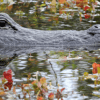 By Jim Stevenson
By Jim Stevenson
Thanks to a conversation with my friend Jean Booth, and her leadership and enthusiasm in the birding community, we are gonna try a brand new event for birders in the Houston/Galveston area. I know you’re excited and you haven’t even read about it yet! >I’m gonna organize field trips, free, of course, in y’all’s area while I’m gone for the summer. There will be a facilitator for each trip and their phone number will be given out for birders interested (only). It’d be a great way to meet birding friends, it’d be safer for you gals and everyone could share information and have fun! Jean has volunteered to facilitate this first trip. OK, let’s give it a try. Let’s plan a walk around the dike at Brazos Bend State Park next Saturday, May 25. Y’all will meet at BBSP at 8 am, just inside the park entrance, at the huge parking lot (with bathrooms) on the left. I need someone who wants to go as a facilitator, and the rest is easy. You should see Least Bitterns, Purple Gallinules, Prothonotary Warblers, Northern Parulas and loads of other marsh and forest birds. Oh, if yall contact each other, you can organize rides, and tell wild stories about my crazed field trips! OK, so if you’re interested, e-mail me, and I’ll put you in touch with Jean.
Attached is the end-of-season photos on all the non-birds from this spring. Back to birds very soon!
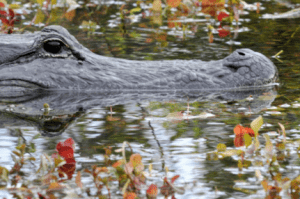
A curious cultural difference between my home state of Florida and my new home of Texas is that back home, gators are just taken for granted. We even have one broke- down, low-rent junior college with them as their mascot. 😉 But in Texas, like at Brazos Bend State Park, they get quite the attention, and folks on trails become immediate friends, talking about these dangerous creatures. I would hate to break it to them that these are reptilian pussycats who pose far less danger than the few Cottonmouths hiding in the shorelines, or the occasional wasp nests in the brush.
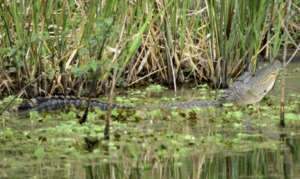
One time to at least give gators some healthy respect is when the males are bellowing in late winter, trying to gain the attention of the females. Note the arched back and raised head, sure signs this big fella wants some companionship. Alligator-like creatures have bee doing this for nearly 400 million years and it’s nice to see places where they still exist. There is another species of gator in the Orient.
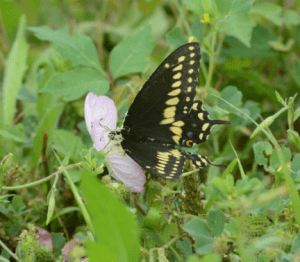
Almost lost in the bird migration are the butterflies that pass through our area, with some spending the summer here. I believe this is a Black Swallowtail, but I am no expert. But the thought that many species do migrate across the Gulf is amazing too me, with many birds failing each spring in that mission. If I wasn’t a birder…
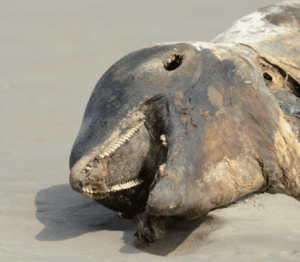
The common cetacean in our waters is the Atlantic Bottle-nosed Dolphin, whose scientific name, Tursiops truncatus, refers to their “truncated” snout. I Googled it to make sure of my spelling and found one source who referred to it as a fish. Oh, my. Many people call these creatures “porpoises,” but that’s another group, those having spade-shaped teeth instead of the conical champers you see above.
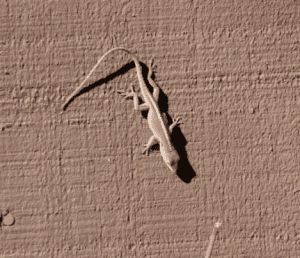
A new species of (introduced) lizard has arrived, that of the Brown Anole. Our native Green Anole can turn brown, of course, but these tropical creatures stay brown. In places like South Florida, the Brown (and others) Anole has replaced the Green, with the freeze line basically acting as a boundary between the Browns and Greens. Er go, with global warming, this line continues to move northward, encroaching into our Green’s homes.
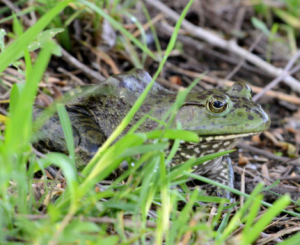
This is a real, honest-to-goodness Bullfrog, not the imposter so many people call other species. Males have a green front and large tympanum (ears) and are sometimes heard issuing their mating call of “chug-o-rum.” The real power of the Bullfrog is their legs, which allow them to jump at winged prey as well as escaping their predators.
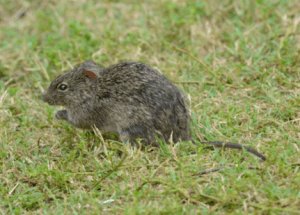
Our native species of rat is the Cotton Rat, and this one and its buddies really enjoyed all the bird seed Alan and Brian put out for the birds here this spring! These are easily told from our non-native species of Black and Norway Rats by the shorter tail and more grizzled fur, and they don’t carry diseases like the two aliens. Albert Camus wrote a book entitled “The Plague,” detailing the black plague of 1666. Read my books instead. 😉
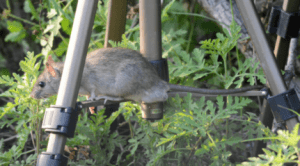
The two introduced species of rats are the Black and Norway Rats. This is the Norway, as they tent to climb much more than Blacks. This one is hanging out on Alan’s tripod, watching the master work (AM, not me). Brian, you’re great, too! 😉 These two species cause tremendous damage annually to human-made structures and spread diseases like political parties spread propaganda.
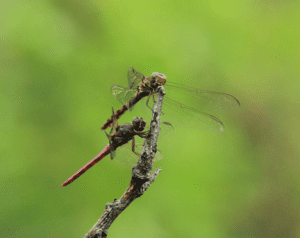
This pair of dragonflies had quite a spring in my pond, ensuring the next generation of their kind. The fuchsia-colored males attracted my dad’s attention when I was a boy, and he temporarily left his ornithological blinders to look them up. They are found through the South in small bodies of still (lentic) water.
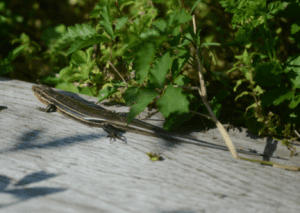
Skinks are shiny lizards with lots of black, males with red heads and females with blue tails. The Five-lined Skink above has been introduced into Galveston Island, and in the absence of many predators, has flourished. The blue tails in the gals have a neurotox that can partially paralyze humans but can kill cats which attach the lizard and ingest the tail.
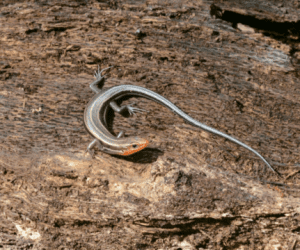
Here is a young male at Brazos Bend State Park, just getting his reddish head. Like so many vertebrates, young skink sexes are difficult to determine until they begin to mature. Skinks are a group of lizard with shiny, smooth skin, while anoles (pronounced an nole) two syllables are rougher and have little color except green and brown. Of course, being able to change color is a pretty righteous ability!
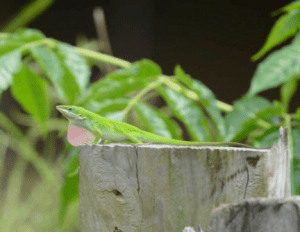
Here is one of my Green Anoles displaying for a female by showing her his reddish throat fan. How ‘bout it, gals? You can also see the eyelids, which allow lizards to close their eyes at night (unlike snakes) and their external ear opening (again, not found in snakes). The genus Anolis is found all over the Tropics in the New World.
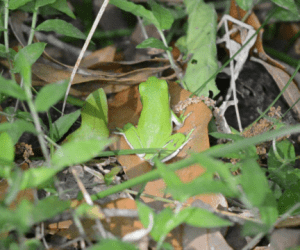
Treefrogs can climb like lizards but they use suction cups on their toes instead of claws and/or pads. This is the Green Treefrog, a rather large species usually found not far from water. The smaller Squirrel Treefrog, which can be green, brown or whatever, is far more common and catholic.* Greens honk when trying to attract a mate and Squirrels make harsh, grating sounds reminiscent of squirrels. These two are, by far, the two most abundant, widespread treefrogs (genus Hyla) in the Deep South. *Catholic, as in common, normal and widespread.
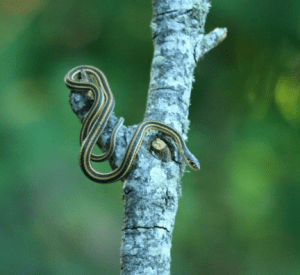
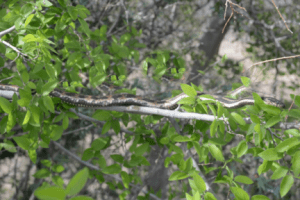
I would be very surprised if ANYONE out there knew what this was! It’s a hybrid, a cross between the Gulf Salt Marsh Snake and the Broad-banded Watersnake. The former is, of course, a saltwater inhabitant and the latter is common in many freshwater areas of East Texas. Hurricane Ike washed tens of thousands of Island (coastal) animals inland and this is the result of two closely-related species winding up together. You can see it has the stripes of the salt marsh snake up front and the banding of the BBWS toward the rear. How cool is that?
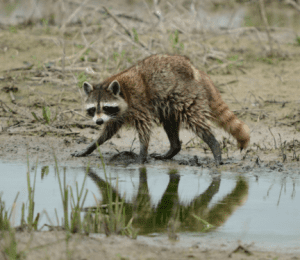
Raccoons are extremely adaptable mammals with an affinity for water. This one is looking for “mud bugs,” which are crayfish in Texas (or crawdaddies, crawfish, etc.). Many predators have a black mask which hides the eyes, making them a little less conspicuous when foraging. Our pit vipers have this, as well as the Lone Ranger.
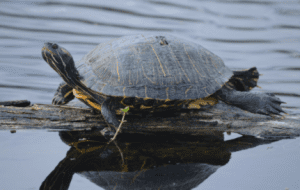
Cooters and sliders are very common, aquatic turtles found over much of the US. In East Texas, this Red-eared Slider has a virtual corner on the market, being found in lentic and lotic (moving) water. This unit has an old wound in the middle of his back, which I strongly suspect was inflicted by a gator. Their dull teeth and mighty jaws are perfect for crushing turtle shells. But not Seminoles.
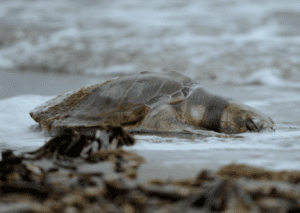
Sea turtles are the wanderers of the ocean, but this one’s voyage has ended. This is the Ridley’s, an endangered species on account of being eaten and their eggs being taken as well. They are smaller than other sea turtles and have a rounder shell. They will also bite the living @#$% out of you if you mishandle them. When you see a dead sea turtle or marine mammal (like a dolphin), please call the hotline!
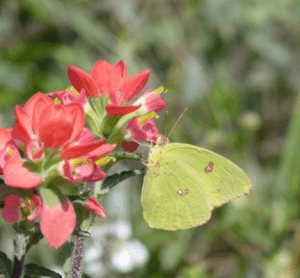
Sulphurs are also migratory butterflies but without pattern. Arriving off the water, any animal has three needs: rest (or sleep), water and food. In my yard, birds drink, eat then sleep – but not long! You can also see the three pairs of legs all insects have, as opposed to arachnids, which have four pairs. Many of the arachnids eat many of the insects, but sometimes vice versa.
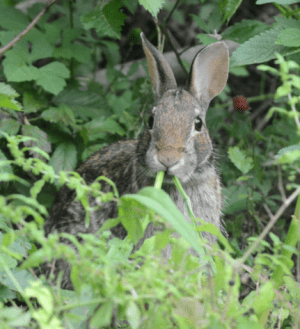
Swamp Rabbits are creatures of woodsy areas, unlike the cottontails of the open areas. Swamps have smaller ears as they are used for heat loss, and cottontails live out in the sun more often than Swamps. In Florida, this species is replaced by the Marsh Rabbit, an even smaller creature, found a bit up the Atlantic Seaboard.
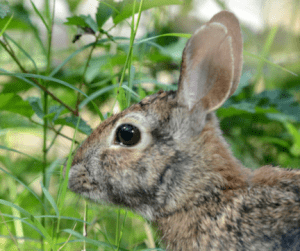
Rabbits have capillaries galore in their ears, perfect for releasing heat on warm days. Like the stegosaurus before them, they gain heat when sitting sideways to the sun and release heat when facing it. Their whiskers help them miss plants when foraging at night and their enormous eyes sort out the green world in front of them amazingly well. Of course, with no color vision, it’s all green. Or purple… 😉
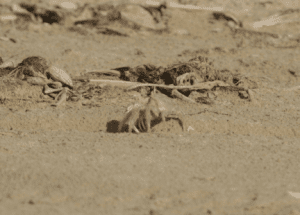
Ghost Crabs are a worldwide group, cleaning up our beaches and killing a few helpless animals. As long as their gills remain moist they can breathe, and running down into their burrows accomplishes that. Like other crabs, their eyes are on stalks, and they can lie down in a trough on the front of the carapace (shell) if their eyes are threatened.
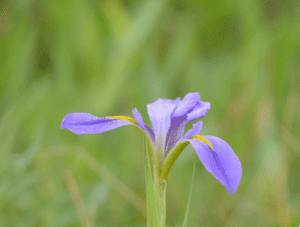
Just a simple iris for all you mothers. Having lost mine this year, last Sunday was tough, and I mulled over how lucky I was to have been raised by the parents I had. I am so proud of the way she touched the lives of thousands of kids in her elementary teaching career and I hope to have accomplished even a small portion of that one day. And that, my friends, is Jim’s world of “other” animals. And flowers. Js Brigham City, UT Plains/Rockies trip stars tomorrow

 Posted in
Posted in 























